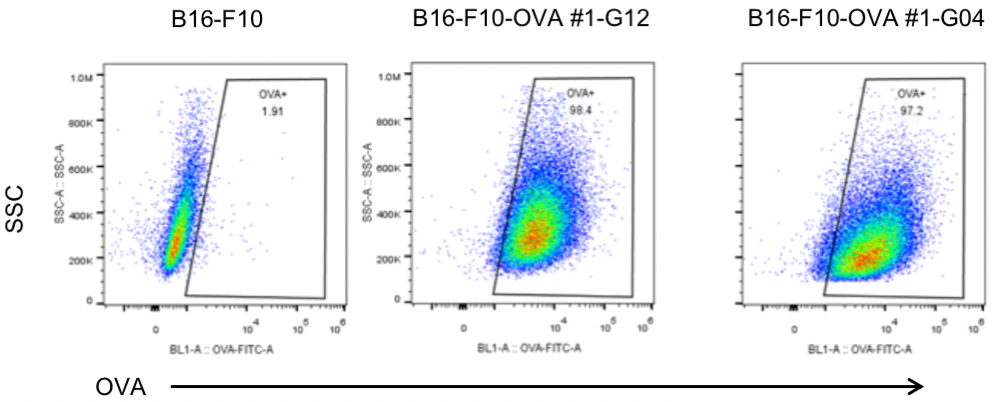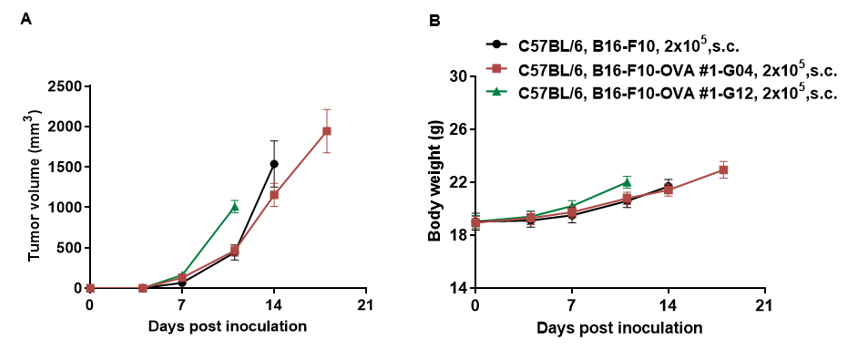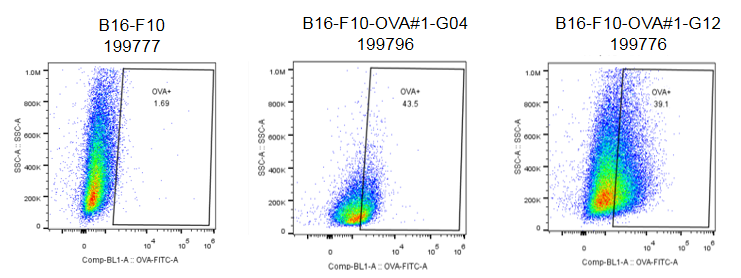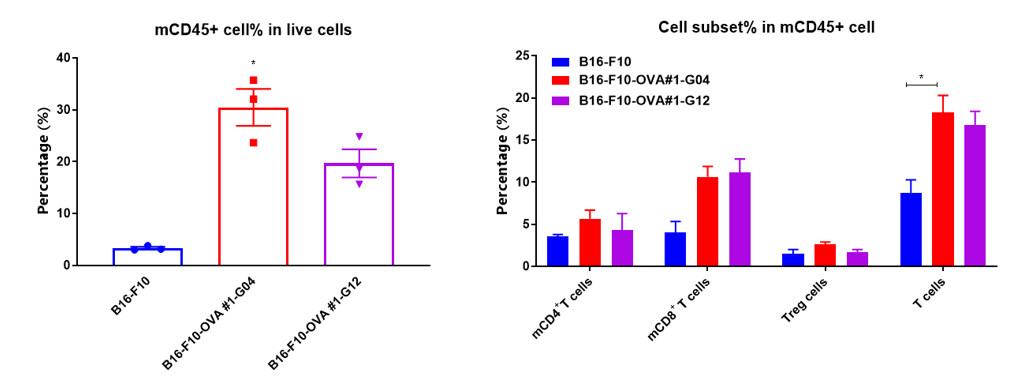|
Common name |
B16-F10-OVA | Catalog number | 311537 |
| Aliases | OVAL, SERPINB14 | Disease | Melanoma |
|
Organism |
Mouse |
Strain | C57BL/6 |
| Tissue types | Skin | Tissue | Skin |
Application
B16-F10-OVA cells have the capability to establish tumors in vivo and can be used for efficacy studies.
Targeting strategy
Gene targeting strategy for B16-F10-OVA cells. The coding sequence of chicken ovalbumin gene (SERPINB14) was transduced into B16-F10 cells by lentiviral.
Protein expression analysis

OVA expression analysis in B16-F10-OVA cells by flow cytometry. Single cell suspensions from wild-type B16-F10 and B16-F10-OVA cultures were stained with species-specific anti-OVA antibody. OVA was detected on the surface of B16-F10-OVA cells but not wild-type B16-F10 cells. The clones 1-G12 and 1-G04 of B16-F10-OVA cells were used for in vivo experiments.
Tumor growth curve & Body weight changes

Subcutaneous homograft tumor growth of B16-F10-OVA cells. B16-F10-OVA cells (2x105) and wild-type B16-F10 cells (2x105) were subcutaneously implanted into C57BL/6 mice (female, 7-week-old). Tumor volume and body weight were measured twice a week. (A) Average tumor volume ± SEM. (B) Body weight (Mean± SEM). Volume was expressed in mm3 using the formula: V=0.5 X long diameter X short diameter2. As shown in panel A, B16-F10-OVA cells were able to establish tumors in vivo and can be used for efficacy studies.


Flow cytometry analysis of tumor infiltrating lymphocytes (TILs). Tumor cells were harvested at the conclusion of the experiment. Flow cytometry analysis of the lymphocytes were performed to assess cell number and proportion changes compared to the wild-type B16-F10. CD4+ T cells, CD8+ T cells and Treg cells were increased, and the ratio of CD8+ T cells were significantly increased compared to the wild-type B16-F10. Therefore, B16-F10-OVA cells can be used for in vivo efficacy studies of immuno-oncology (I/O) therapeutics. Values are expressed as mean ± SEM.






 +86-10-56967680
+86-10-56967680 info@bbctg.com.cn
info@bbctg.com.cn